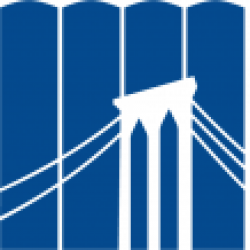As anyone who has heard me speak about predatory publishing knows, there are non-predatory journals that fall into a grey area of quality. They abuse “overproduction” of articles by excessive promotion of special issues or pressure on editors to attract and accept more articles. In particular, newer open access publishers including Hindawi, MDPI, and Frontiers were called out for these practices. Hindawi, which Wiley purchased, ultimately was dissolved as a brand and four of its journals ceased publication. More pertinent to City Tech faculty, an article in the Wall Street Journal on March 13 discusses how several of the big five scholarly publishers, specifically Elsevier, Wiley, and Springer Nature, are in an “arms race” to publish more and more papers. Editors are very unhappy, of course.
Sage Research Methods
We’re very excited to announce a great new resource for faculty performing original research: Sage Research Methods.
Sage Research Methods supports research at all levels by providing material to guide users through every step of the research process. It provides more than 1000 books, reference works, journal articles, and instructional videos by world-leading academics from across the social sciences, including the largest collection of qualitative methods books available online from any scholarly publisher.
Library Exhibit, Typography: The Backbone of Design
This March, the library is hosting a wonderful exhibit of Communication Design (COMD) student work on typography. The exhibit was curated by Professor Anita Geraldo and includes a video created by Professor Josh Kapusinski. The library has created a related book display of books on type and typography.
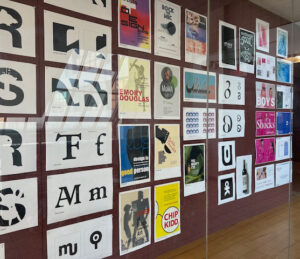
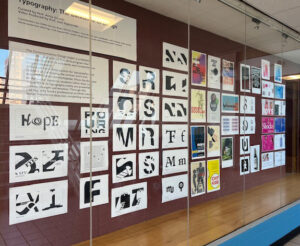
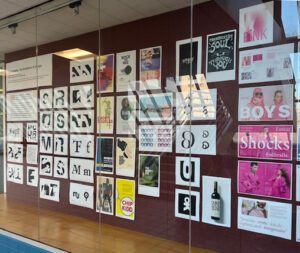 from the exhibit overview: The Communication Design Major is a NASAD-accredited Bachelor of Fine Arts program that immerses students in a dynamic and comprehensive design education. At its core lies a deep passion for typography—the essential art of shaping the written word into meaningful visual communication. From their first year to their senior capstone, students refine their craft, mastering how typography subtly yet powerfully conveys thought and emotion. Through this journey, they build a professional portfolio where design transforms ideas into compelling narratives.
from the exhibit overview: The Communication Design Major is a NASAD-accredited Bachelor of Fine Arts program that immerses students in a dynamic and comprehensive design education. At its core lies a deep passion for typography—the essential art of shaping the written word into meaningful visual communication. From their first year to their senior capstone, students refine their craft, mastering how typography subtly yet powerfully conveys thought and emotion. Through this journey, they build a professional portfolio where design transforms ideas into compelling narratives.
The following COMD faculty selected student work and contributed: Professors Patricia Childers, Chun-Wo Pat, Lynn Cole-Walker, John DeSantis, Anita Giraldo, Maria Geneiveve Hitchings, Lyubava Kroll, Rich Redznak, Dirk Rowntree, Beth Tondreau.
Students whose work are featured in the exhibit are: Leslie Alcantara, Nadeen Baala, Felix Batiste, Brandon Belliard, Jorge Buenabad, Shamika Bumpkus, Andreina Cabral, Nathaniel Dharmadi, Yoanna Donalds, Dennis Diaz, Esteicy Diyarza, Layla Flores, Fenix Frias, Barry Forde, Amir Gamble, Kateri Gensler, Paulina Guadalupe, Alexander Gutierrez Rodriguez, Ze Huang, Andras Jaime, Felix Lin, Jawanza Lynch, Christian Macias, Alexandra Melendez, Mahareen Munawar, Sunny Naseem, Auribel Vargas Pena, Garry Peltzer, Jr., Michael Peterkin, Jennifer Rodriguez, Ariel Saunders, Michael Shahaf, Raewsa Tanjim, Tobrise Angy Vasquez, Oscar Wong, Amy Wu, David Wu Liang.
International Journal of Transformative Teaching and Learning in Higher Education (IJTTL)
 Faculty whose scholarship focuses on teaching and learning may be interested to learn that the Center for Excellence in Teaching and Learning at Stony Brook University recently launched a new journal, International Journal of Transformative Teaching and Learning in Higher Education.
Faculty whose scholarship focuses on teaching and learning may be interested to learn that the Center for Excellence in Teaching and Learning at Stony Brook University recently launched a new journal, International Journal of Transformative Teaching and Learning in Higher Education.
This new journal is open access and does not require any author fees for publication.
Meet your library!
 Hi Students! Did you know the library has a dedicated lab with Mac computers? Did you know that we have book scanners? Did you know that we have a graphic novel collection (with manga and anime titles) under the stairwell?
Hi Students! Did you know the library has a dedicated lab with Mac computers? Did you know that we have book scanners? Did you know that we have a graphic novel collection (with manga and anime titles) under the stairwell?
Now’s the time to visit your library and learn about all the cool stuff (not just books) we have that you can borrow or use in the library and get to know the different areas in the library. Library tours meet outside the library and run about 30 minutes on the following dates.
Jan. 30, 1 pm
Feb. 6, 5 pm
Feb. 13, 1 pm
Feb. 25, 5 pm
Feb. 27, 1 pm
Spring 2025 Scholarly Publishing Workshops
These workshops support your publishing and teach you how to make yourself more visible and how to document the impact of your work.
Art and Alternative Scholarship Panel
April 4, 12:45 – 2:00 PM
This panel will explore the shifting landscapes of socially engaged and experimental art and research practices and how these shifts have the potential to transform institutional paradigms around scholarly impact.
Get Evidence! Scholarly Metrics for Your PARSE and CV
Tuesday, April 8, 1:00 – 2:00 PM
Covers Google Scholar Profile for citations and Google Scholar for journal rankings, Scimago for journal rankings, Altmetric Attention Scores for social media, and download reports from Academic Works (and other repositories). We’ll also touch on finding individual journal acceptance rates as well as Journal Impact Factors. The workshop will briefly address books and book chapters as well as other ways we can demonstrate the value and impact of our work.
Registration
Get Organized! Zotero Basics
May 5, 4:00-5:00 PM
Attendees will learn the capabilities of this powerful, free open-source reference management software program. The session covers the functionalities of the Zotero client, adding the Zotero plugin to your browser, and importing citations to generate a bibliography. To maximize our workshop time, please download Zotero from https://www.zotero.org and create your username and password in the Zotero client software by going to EDIT > PREFERENCES > >SYNC
Registration
Our Scholarly Publishing Clinic is available on-demand and during our office hour at 4 PM every first Tuesday of the month. We provide one-on-one consultations as well as workshops that fit your schedule. Find more scholarly communications and publishing support from the library on our website. Questions? Contact Prof. Monica Berger mberger@citytech.cuny.edu
New book: Armed by Design: Posters and Publications of Cuba’s Organization of Solidarity of the Peoples of Africa, Asia, and Latin America (OSPAAAL)
Prof. Jen Hoyer, Assistant Professor and Eresources/Technical Services Librarian, with Hanna, Lani, Josh MacPhee, Vero Ordaz, and Sarah Seidman, recently edited a new edition of Armed by Design: Posters and Publications of Cuba’s Organization of Solidarity of the Peoples of Africa, Asia, and Latin America (OSPAAAL) ( Brooklyn, NY: Common Notions, 2025.)
Describe your scholarship or creative work to someone unfamiliar with the field.
This book is an updated and expanded edition of a 2014 publication with the same title, bringing together even more ideas and perspectives on the work of OSPAAAL and the project of international solidarity and presenting all content in four languages. With over 150 full-color images, it presents an unprecedented survey of the outputs of OSPAAAL. Support for this project was provided by a PSC-CUNY Award, jointly funded by the Professional Staff Congress and the City University of New York.
Find a copy of this book at City Tech Library
12/5–Know Your Rights, DACA, Immigrant Families, Students and Trans Communities: A Post-Election Workshop
Workshop, Dec. 4, Get Organized! Zotero Basics
Get Organized! Zotero Basics
Dec. 4, 4-5 PM
Attendees will learn the capabilities of this powerful, free open-source reference management software program. The session covers the functionalities of the Zotero client, adding the Zotero plugin to your browser, and importing citations to generate a bibliography. To maximize our workshop time, please download Zotero from https://www.zotero.org and create your username and password in the Zotero client software by going to EDIT > PREFERENCES > >SYNC
Registration
Workshop, Nov. 6, Academic Works Demystified
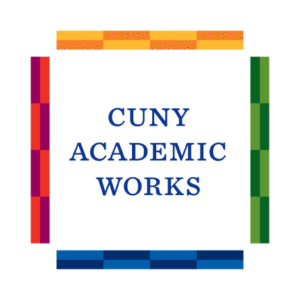 Academic Works Demystified
Academic Works Demystified
Nov. 6, 11 AM-12 PM
What is Academic Works and how does it benefit you as a scholar? You will learn more about how and why publishers allow you to contribute to Academic Works and the many benefits to sharing your scholarship openly to you, your students, and the public.
Registration
